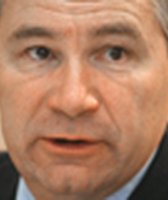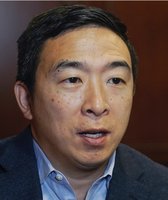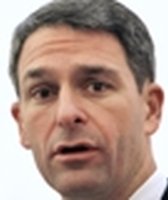Get PolitiFact in your inbox.
In his first major policy address, Donald Trump declared he would dramatically alter American strategy in Afghanistan, marking a new chapter in the longest war in U.S. history.
Trump laid out his plan in a televised speech Aug. 21 following what he described as a comprehensive policy review that would lead to fundamental changes in the American approach to the region while absorbing the lessons of history.
We asked several national security experts whether Trump’s strategy represents a true break from the past, or whether it’s a continuation of the policies carried out under his predecessors. Here, we’ll look at where Trump’s policies are different and where they are the same.
Trump declared an end to the policy of telegraphing troop levels, and said resources would be based on conditions on the ground.
"I’ve said it many times how counterproductive it is for the United States to announce in advance the dates we intend to begin, or end, military options," Trump said. "We will not talk about numbers of troops or our plans for further military activities."
While Defense Secretary Jim Mattis has not revealed how many additional troops will deploy to Afghanistan as part of Trump’s plan, it’s believed to be around 4,000.
Experts we spoke to said the U.S. footprint is unlikely to grow anywhere near the kind of levels seen under Obama, which reached a high of 100,000 in August 2010.
Peter Feaver, a professor of political science at Duke University and a former National Security Council staff member, said he does not anticipate the rate and duration of deployments will be anywhere near as burdensome on regular military forces as they were under previous administrations. The impact of deployments will likely be felt most acutely by Special Operations Forces, he said.
While troop levels aren’t as high as in previous years, Trump’s intent to shift to a conditions-based approach — as opposed to setting an end date — means the war in Afghanistan may still play out for a long time to come.
"This seems to signal an open-ended commitment," said Andrew Bell, a professor of international studies at Indiana University. "The measure for success and exit under this strategy remain vague and almost identical to previous administrations."
During his speech, Trump laid out his vision of victory in Afghanistan.
"From now on, victory will have a clear definition: attacking our enemies, obliterating ISIS, crushing al-Qaida, preventing the Taliban from taking over Afghanistan, and stopping mass terror attacks against America before they emerge," Trump said.
Experts we interviewed unanimously agreed these strategic objectives are virtually identical to those of previous administrations.
"These are not new," Bell said. "All are a continuation from earlier policies."
Trump sought to distance himself from a policy of nation-building, saying that under his new approach "we are not nation-building again — we are killing terrorists."
However, some experts we spoke to questioned this stance given how much needs to be done to ensure the Afghan government can ultimately provide its own security.
"We don’t really have the luxury of ignoring what Trump dismissed as nation-building, even if there are multiple ways to define and pursue it," said Michael O’Hanlon, a senior fellow at the Brookings Institution.
While national security experts agreed the overall strategic objectives were the same, they disagreed on whether Trump’s means for achieving them marked a meaningful and realistic departure from previous administrations.
Those who read Trump’s remarks as a significant change pointed to his shift away from a strategy tethered to timetables for withdrawal.
By sidestepping a discussion of specific troop levels and timelines, Trump gave his war planners more space and flexibility to fight the war, said Peter Mansoor, a military history professor at Ohio State University and a former Army colonel.
"What senior political and military advisers understand — and what they have convinced the president of — is the need for a long-term commitment to the stability of Afghanistan without the constraints of a self-imposed timeline for withdrawal," Mansoor said.
Others said the pivot away from timetables posed another advantage: It could convince the Taliban they cannot win the war by simply waiting until a fixed calendar date triggered American withdrawal. However, experts were split on whether a more open-ended U.S. commitment would change the Taliban’s strategic calculation.
But even those who were encouraged by Trump’s approach said signalling an extension of the conflict risks paying a political price to a war-wearied American public.
"Obama gained some marginal partisan political advantage from his timetable and Trump may well pay some marginal partisan political price for shifting back to conditions-based," Feaver said. He said he believes Trump’s approach is wiser than Obama’s decision to peg withdrawal timelines to the electoral calendar.
Previous administrations have criticized Pakistan for its lackluster approach to rooting out enemy safe havens under its jurisdiction, and Trump’s speech continued this pattern.
"Pakistan has also sheltered the same organizations that try every single day to kill our people," Trump said. "We have been paying Pakistan billions and billions of dollars at the same time they are housing the very terrorists that we are fighting. But that will have to change, and that will change immediately."
But some experts heard Trump take a tougher line than his predecessors, and said that if he follows through, it could create more favorable dynamics for the United States in the region.
The U.S. approach to Pakistan is often described in terms of carrots (incentives) and sticks (punishment). Feaver said Trump’s stance appears "tilted more in the direction of sticks than were previous approaches."
"The strategy promises a tougher line on Pakistan, something the last two administrations tried to do but found too hard," Feaver said. "If the Trump administration carries it off, that could be significant."
Trump declared his administration would break with the Obama administration on the degree of constraint it places on U.S. warfighters.
"We will also expand authority for American armed forces to target the terrorist and criminal networks that sow violence and chaos throughout Afghanistan," Trump said. "These killers need to know they have nowhere to hide; that no place is beyond the reach of American might and Americans arms. Retribution will be fast and powerful."
Practically speaking, what does it mean to "expand authority"— what will U.S. forces be able to do that they couldn’t do before?
Trump is likely indicating he wants to loosen the rules of engagement, which means a relaxing of the procedures that govern the use of force, said Bell of Indiana University, an expert on the law of armed conflict. A consequence of looser rules of engagement could be that lower-ranking troops would be authorized to sign off on airstrikes or other combat actions.
Some experts, like Feaver of Duke University, said more permissive rules could allow combatant commanders to be more nimble and adaptable in the field.
However, Bell said loosening the rules of engagement could also refer to raising the U.S. military’s threshold for what it considers acceptable collateral damage while conducting combat operations. In plain English, it could mean the United States will kill more civilians.
Abdulkader Sinno, a professor of political science at Indiana University and author of a book on the war in Afghanistan, said that a higher tolerance for civilian casualties would contradict the tenets of the longstanding military playbook — known as the counterinsurgency doctrine — that emphasizes winning the hearts and minds of the host country’s civilian population. Experts have long cautioned that civilian casualties can be a driver of terrorist recruiting.
"It means quicker response time in reaction to intelligence but also an increased likelihood to kill and maim civilians," Sinno said. "It is precisely because of this downside that the Obama administration imposed vetting steps before targeting."
Our Sources
Remarks by President Donald Trump, Aug. 21, 2017
Associated Press, "America’s 16 years in Afghanistan: From triumph to stalemate," Aug. 21, 2017
Email interview with Andrew Bell, a professor of international studies at Indiana University, Aug. 22, 2017
Email interview with Michael O’Hanlon, a senior fellow at the Brookings Institution, Aug. 22, 2017
Email interview with Peter Mansoor, a military history professor at the Ohio State University and a former Army colonel, Aug. 22, 2017
Email interview with Peter Feaver, a professor of political science at Duke University and a former National Security Council staff member, Aug. 22, 2017


















































